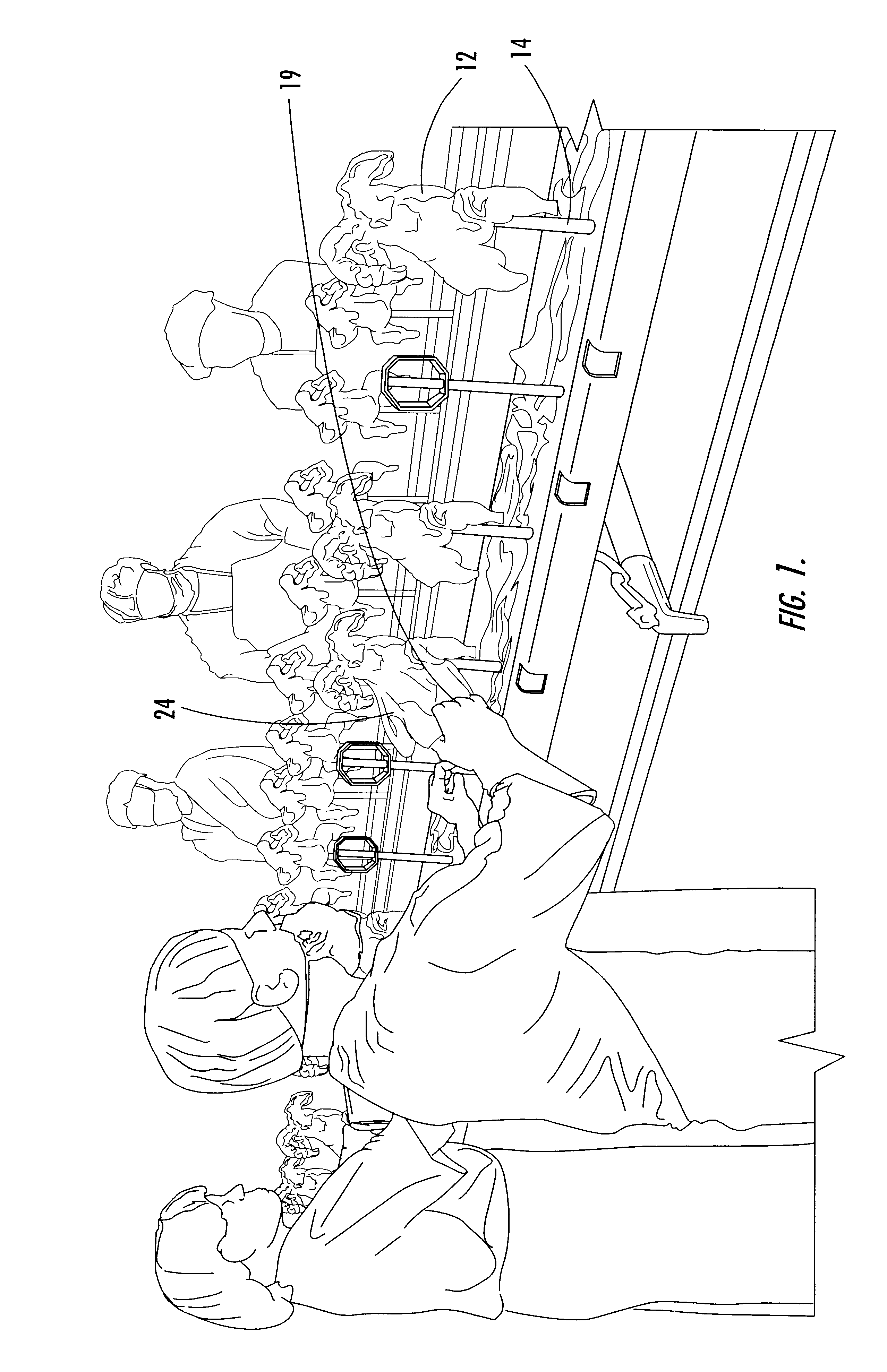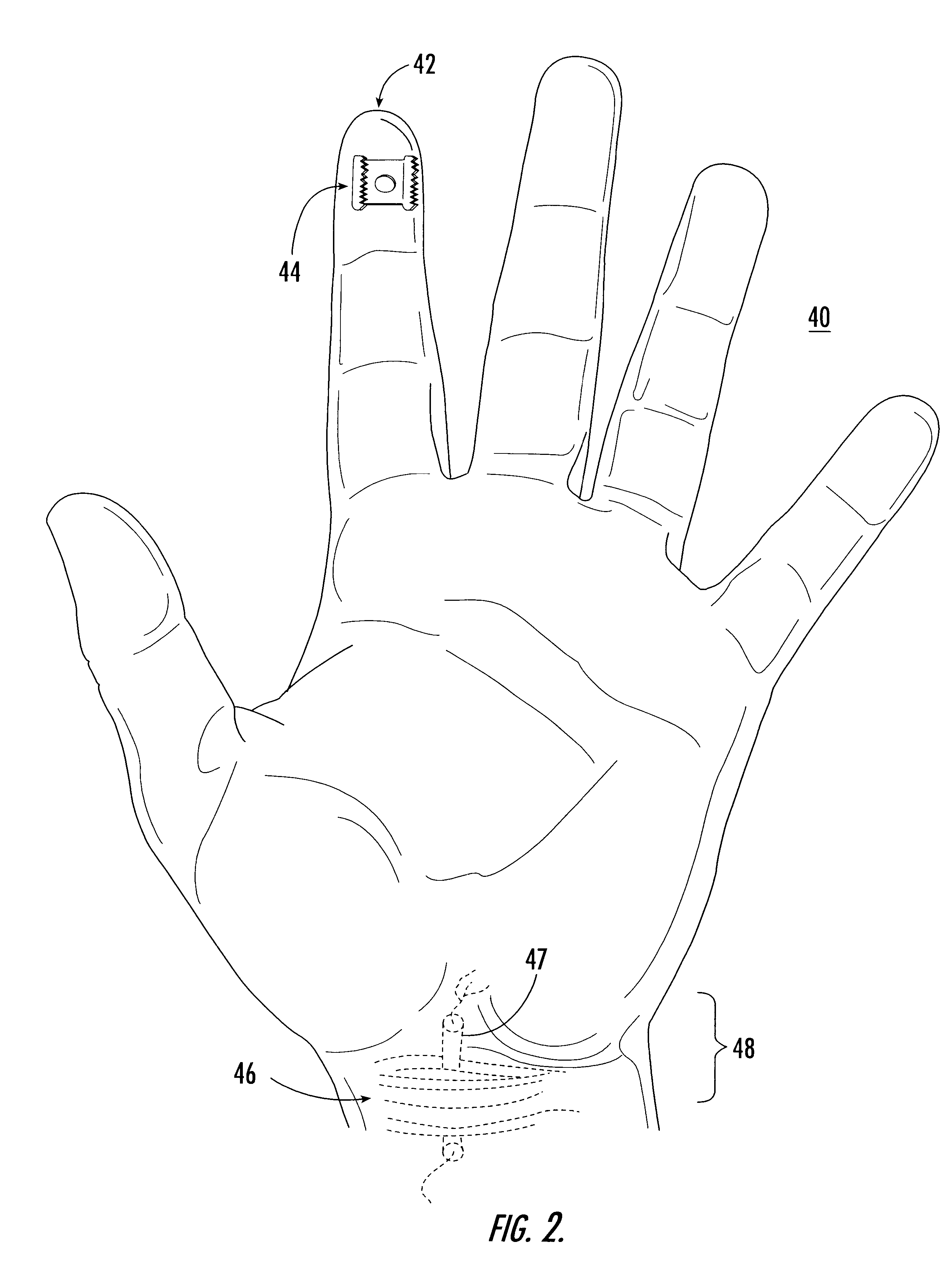Protective animal skinning glove
a glove and glove technology, applied in the field of protective animal skinning gloves, can solve the problems of carpal tunnel syndrome, contaminating the product, and straining the muscles of the finger muscles to the worker's wrist area,
- Summary
- Abstract
- Description
- Claims
- Application Information
AI Technical Summary
Benefits of technology
Problems solved by technology
Method used
Image
Examples
Embodiment Construction
As explained in the "Background of the Invention" section supra, typical animal skinning methods include placing eviscerated bird 12, FIG. 1 on cone 14. A cut is made from the top section of bird 12 to the bottom section thereof. Workers then insert the fingers 19 of both hands into the open flap created from the cut and pull skin 24 from bird 12. Workers rarely use their bare hands to perform this task due to the discomfort, the risks of contamination of the meat, cuts and abrasions to the workers hands, and transmission of diseases to the workers. Thus, workers generally resort to protective gloves made of cotton, latex, nitrile or metal mesh. However, with repetitive use, the gloves become covered or saturated with the waste products of skinning, causing the protective gloves to become very slippery, forcing the worker to grip even harder. This increases the strain on the muscles of the wrist area, including the flexor retinaculum, which in turns applies pressure to the carpal tu...
PUM
 Login to View More
Login to View More Abstract
Description
Claims
Application Information
 Login to View More
Login to View More - R&D
- Intellectual Property
- Life Sciences
- Materials
- Tech Scout
- Unparalleled Data Quality
- Higher Quality Content
- 60% Fewer Hallucinations
Browse by: Latest US Patents, China's latest patents, Technical Efficacy Thesaurus, Application Domain, Technology Topic, Popular Technical Reports.
© 2025 PatSnap. All rights reserved.Legal|Privacy policy|Modern Slavery Act Transparency Statement|Sitemap|About US| Contact US: help@patsnap.com



